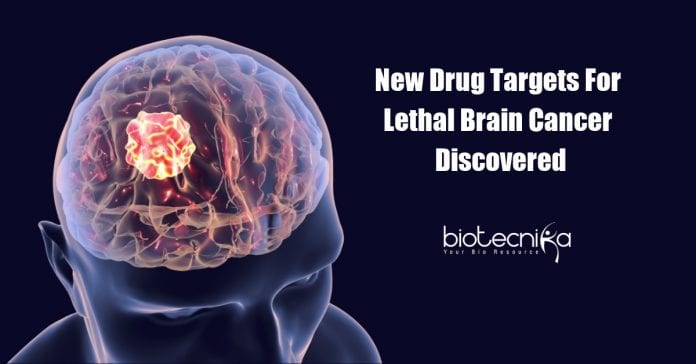New Drug Targets for Glioblastoma Discovered
An aggressive form of brain cancer, glioblastoma cells can evade treatment and tumors return and the treatment involves surgery followed by chemotherapy or radiotherapy. After diagnosis, the average survival of a patient ranges for 12-18 months, and the prognosis is poor.
To help glioblastoma patients, new, targeted treatments and immunotherapies are currently being developed. However, the reason why glioblastomas begin to grow is still not known exactly.
Promising new drug targets have been identified in more than 200 genes with novel and known roles in the most aggressive type of brain cancer, glioblastoma. For the first time, to demonstrate how a mutation in the well-known cancer gene, EGFR initiates glioblastoma, and it works with a selection from more than 200 other genes to drive cancer, researchers from the Wellcome Sanger Institute, Addenbrooke’s Hospital, and their collaborators engineered a new mouse model.
To advance new treatments for this lethal form of brain cancer, the first mouse model of its kind, which is available for the research community, was presented in the new study, published in Genome Biology.
It was seen from the model that the brain tumors could be initiated to grow in mice by
EGFR (epidermal growth factor receptor), the well-known cancer gene alone, which resulted in tumors that were highly representative of human glioblastomas.A corresponding author based at Addenbrooke’s Hospital and the University of Cambridge, previously from the Wellcome Sanger Institute, Dr. Imran Noorani said, “We identified new driver genes, whose potential for therapeutic targeting deserves further exploration as we showed that the familiar cancer gene, EGFR is capable of initiating glioblastoma for the first time in a new mouse model for studying glioblastoma, the lethal human brain cancer.”
The PiggyBac transposon technique—a small section of DNA inserted into different parts of the genome to introduce mutations was used by the team to identify which genes help EGFR to drive cancer. More than 200 novel and known mutations in tumor suppressor genes that were working with EGFR to drive brain tumor growth were revealed through this.
Many genetic mutations found in both humans and mice were uncovered as the team compared the results with human genome sequences from glioblastoma patients. There is no clear indication of which specific mutations drive cancer as the human genomic data contains many mutations implicated in glioblastoma. The team, with the new mouse model, was able to narrow down on which mutations drive glioblastoma, which will focus on developing drugs in the future.
The Chief Scientific Officer of Kymab and Professor in the Department of Medicine, University of Cambridge, and previously Director of the Wellcome Sanger Institute, Professor Allan Bradley said, “New targeted therapies are immediately needed for glioblastoma patients. As there are many other genetic drivers that can ‘take over’ progressing cancer, glioblastoma tumors can become highly resistant to therapies that target specific molecules. To translate findings from new potential treatments tested on mice to clinical trials, this new mouse model provides the missing link.”
Source
New Drug Targets for Glioblastoma






























